
Everything on G-Sync and FreeSync
What do G-Sync and FreeSync do?
G-Sync and FreeSync are technologies which prevent both screen tearing and stuttering. Both techniques are based on adaptive sync, which is a technique that gives monitors a variable refresh rate. That means that the monitor can adjust its refresh rate to that of the video card at any time. This way, your video card and monitor are in sync, and you can enjoy a smooth gaming experience without stuttering images. That's useful for fast games, or for demanding scenes in shooters, for example.
In short

G-Sync
- Fixes screen tearing and stuttering
- Works with low refresh rate
- Synchronization with NVIDIA video cards
- Does not work with AMD video cards
- More expensive than FreeSync
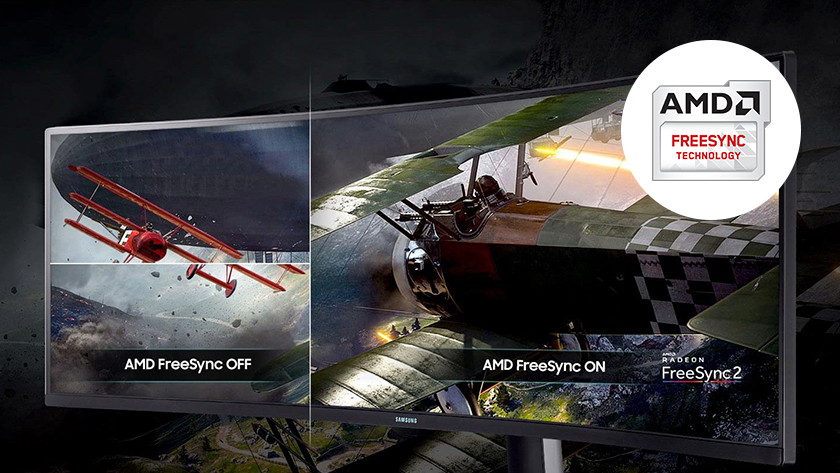
FreeSync
- Reduces screen tearing and stuttering.
- Cheaper than G-Sync.
- Synchronization with AMD video cards and sometimes NVIDIA video cards. It differs per monitor.
- Does not work with NVIDIA video cards.
- Risk of stuttering at too low refresh rates.
What's tearing and stuttering?
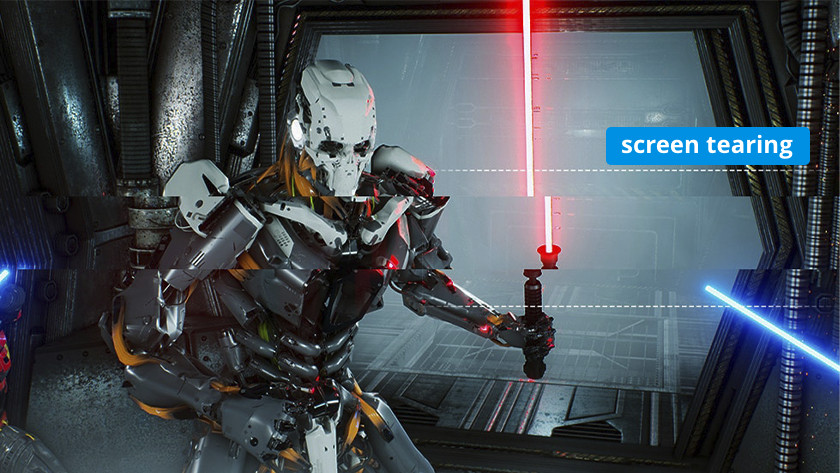
Screen tearing
A monitor always has a fixed refresh rate, for example 144Hz. This differs per video card, which sends out many different numbers of frames per second. Because of this, multiple images can appear on your screen at once, because your monitor is still processing the new images. This clumpy effect also called screen tearing.

Stuttering
Not a lot of video cards keep the refresh rate of the monitor in mind, so some frames are repeated before the next one is sent out. This causes the image to freeze for a second, so it skips one or more frames and it looks like the image stutters. This effect is also called stuttering.
Most important differences between G-Sync and FreeSync

G-Sync
G-Sync only works with NVIDIA video cards, so you really need FreeSync for an AMD video card. G-Sync works via a built-in chip, which you can activate after payment. You do get extra quality for all this exclusivity. G-Sync has a better quality than FreeSync, also at low refresh rates. G-Sync doubles the number of Hertz when they reach below the minimum and avoids screen tearing this way. G-Sync prevents screen tearing and stuttering, while FreeSync only reduces it.
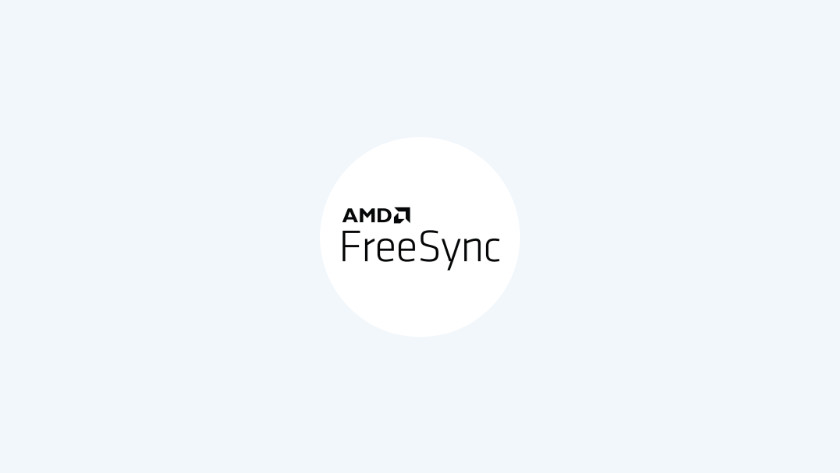
FreeSync
A monitor with FreeSync are easier to get and they're often more affordable. Since January 2019, FreeSync also supports some NVIDIA video cards. This way, a FreeSync monitor synchronizes both AMD and NVIDIA video cards. The downside is that FreeSync has trouble with refresh rates below 30Hz. At this point, FreeSync starts to stutter. This technology only reduces screen tearing and stuttering. G-Sync prevents these problems.
Differend types G-Sync and FreeSync
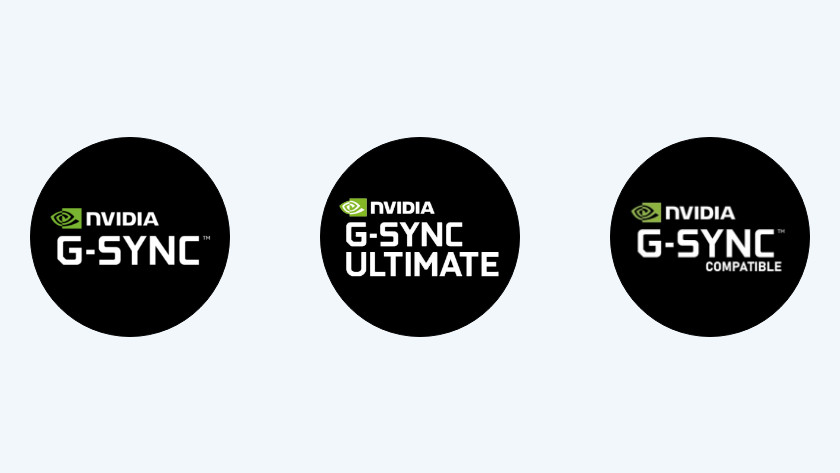
G-Sync
In addition to standard G-Sync, you also have G-Sync Ultimate and G-Sync Compatible. G-Sync Ultimate provides synchronization, and also a sharper and brighter display of HDR images. In addition, HDR images process faster, so they don't appear blurry during refreshing. G-Sync Compatible is a version that doesn't have an NVIDIA chipset, but is is certified by NVIDIA. This more affordable version prevents screen tearing and stuttering, and it is mainly aimed at novice gamers.
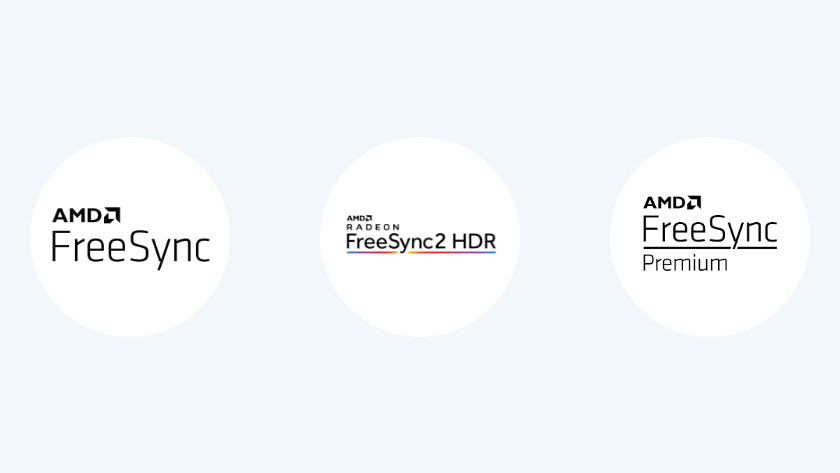
FreeSync
FreeSync also comes in different versions. FreeSync Premium is a version which sets the refresh rate at at least 120Hz, and is compensates for low framerates. This way, FreeSync also prevents stuttering at low refresh rates. FreeSync Premium Pro, also knows as FreeSync 2, offers and upgrade of HDR images and processes them faster, just like G-Sync Ultimate. This way, you don't see blurry colors during refreshing when you game at HDR settings.
How do G-Sync and FreeSync with overdrive software work?
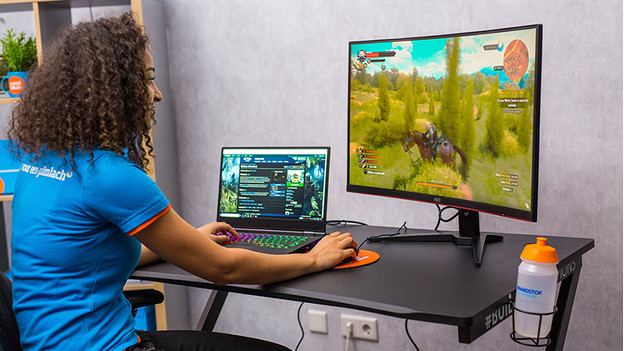
Because G-Sync and FreeSync synchronize the refresh rate of your monitor with the video card, it has an effect when you enable the monitor overdrive. G-Sync automatically adjusts the overdrive software, but this doesn't work very well with FreeSync. It slows down and can even crash, which defeats the point of FreeSync. In the following advice article, we'll tell you more about monitor overdrive.



